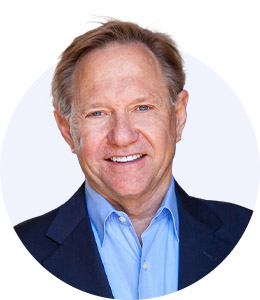I spend a lot of time inside organizations. A common thread I see is that there are many people who are either new to the organization or, if they’ve been there for a while, are in a new position. Both situations can be daunting. Then add the fact that organizations don’t always adapt certain measures to the newness of the team, and the result is individual and organizational tension.
Peter Senge, author of The Fifth Discipline, wrote about creative tension. My take is that when there is a need to perform better, creative tension will be present. It is uncomfortable but necessary. Creative tension is the distance between “where I am now” and “where I need to be.” The key for any leader is to create the right amount of tension. There are times when it is not needed; when a person is performing well, a good leader need not try to create tension. Other times it is needed, but in the right amounts. If the distance between current performance and desired performance is too great, the person may give up (or if they are a job candidate or new employee, they may not start at all). If the gap is too small, the desired urgency may not be there. The art and science of leadership is managing the creative tension.
Inspiring high performance starts with understanding the data. For decades, data has shown that organizations are most vulnerable to losing employees in the first year, and, in particular, in those first weeks and months. When someone is hired, it is not done with the thought that they will be leaving soon. Organizations spend lots of time and resources on the hiring and onboarding process. Likewise, the new hire didn’t take the job with the plan of leaving quickly.
Most likely they left a job where they were doing well and knew their coworkers. As they were leaving, they may have been thanked and celebrated. Now they are in a new role, and it is not easy. They will not do well early on. They will not be familiar with the equipment, culture, team members, and so forth. Quite often, they will compare where they were to where they are now. They are feeling job remorse, similar to buyer’s remorse.
Once I was in a new job after leaving a place where I had worked for six years. In addition to the new job, I was in a different city. When I took the new job, I had underestimated how hard the transition would be. In the job I was leaving, I knew all the staff, the processes, and the community. No job is perfect, and there were things I did not like—but at least I knew them. There is comfort in the familiar.
Even though I entered the new job excited, very quickly I was afraid. I wasn’t used to the organization’s software, and I didn’t know the people. I wondered: Had I bitten off more than I could chew? My family had not moved yet. We had not sold our house. Should I try to go back? I could not share my feelings with my boss (or so I thought). Fortunately, I called a friend and shared how I felt. He helped me see that what I was feeling was normal. I stuck it out.
Today in my organization, we show a short video to new staff addressing that early anxiety is normal. If you would like a copy, just email Quint@quintstuder.com, and I will send it to you.
Tension also occurs when a person’s goals change and/or accountability is put in place. When I work with organizations, there are always areas that the top leaders want to see improved. The process used is to first determine What is the desired outcome? We diagnose the current situation and create a process for improvement. This often includes skill development. Then we make sure accountability is in place. Yes, the accountability will create tension. What makes it healthy tension is the fact that the outcome is doable and skill development is in place. The magic of Precision Leader DevelopmentTM(PLD) is that this investment in an organization’s human capital is tailored to the needs and goals of the individual.
It is important to help new people relate versus compare. When I was in college, I worked in a Ford Motor Company plant. I racked auto parts that were to be chromed. The expected outcome was 50 racks per hour. I worked very hard, and those first weeks got up to 30. I felt like a failure. After several weeks, I made it to 50. I did not quit for I needed the money and had mouths to feed. But it was painful. Looking back, I wish there had been someone there to reassure me that the learning curve was normal, and the work would get easier.
It is important to have a system in place in which new people are paired with more experienced ones. Make sure the experienced people are educated in development. If not, they may not be a help. They may move too quickly, and the new person may look at the experienced person and think, I will never be able to do that. This is a big reason why new people quit.
Also, look at metrics and experience. With the high number of new staff many organizations have these days, using productivity data based on three years ago will not work. This is where empathy and understanding come in. It likely will be necessary to adjust the productivity goal for a while. The same is true when implementing new software. The goal adjustment will not be forever, but allowing leeway when needed shows an understanding of the situation.
Here are a few tips for managing creative tension in a healthy way:
- Set incremental goals. Part of this is educating people on creative tension. I like using a graphic that shows where the person or organization is and where it needs to be. If the gap is too large, set incremental goals. In 1993, Holy Cross Hospital in Chicago had patient experience results in the bottom 10th percentile. The goal set was to be in the 75thpercentile. However, the first goal was to reach the 40th percentile. When that was reached, a celebration was held. Then the next goal was moved to the 60th percentile. We did not achieve the 75th that year; we ended up in the 92nd. Incremental goals work.
- Tell people that discomfort early on in a change is natural, even if the change is positive. For people who are new in a role, it’s common to think, Can I make it? and, Is this the right place for me? Once people know that feeling doubtful and uncomfortable is normal, they are less doubtful and uncomfortable. Think of the new parent with the first child. While it can be a very positive experience, there are times everyone thinks, Can I do this? They see that not only can they do it, they often go on to have more children.
- Show empathy. It is going to take time for people to acquire the experience, thus the skill, to be successful. Consider the newness (whether it’s the manager or the staff who are new) and adjust expectations to the situation. For that new manager, it makes sense to have someone work with them on items like scheduling, budgeting, ordering, etc. The “I hire good people and throw them out there” philosophy is not a good one.
- Know that even experienced people feel the tension with change. A process that will help is as follows: Agree on the needed outcome, assess what it will take to get there, provide the necessary skill development, and implement an accountability system.
Staff shortages happen for a variety of reasons, often beyond our control. What we can control is how we manage creative tension with new employees. Organizations put a great amount of time and resources into recruitment. Very often the key is to focus less on recruitment and much more on retention. The tips above will help improve retention. When we show people a path to success, and provide empathy and support during the tougher times, they will want to stay.

